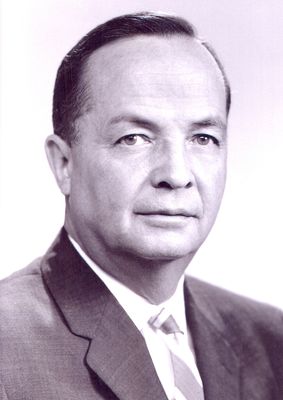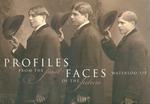Albert S. Barber
Bert Barber, known as the “father of co-operative education in
Canada,” began knocking on doors back in 1958 to find jobs for
the engineering students studying at the fledgling University of
Waterloo.
Barber’s early attempt to link industry with education – now a mainstream concept – was
met with skepticism and resistance from both the business world and academia.
Barber, who died in 1992, was remembered as a university official with vision who also
maintained a personal connection to many of the students, calling each one, “one of the
boys.” He once said, “When they didn’t know where else to go, we invited them in.”
In a history of the university published in 1967, it was written:
“(Barber) will fight for them, he will discipline them
when necessary, he goes to their parties and shares in
their fun and when the going gets rough he is with them
all the way.”
When Barber joined the Waterloo College of Associate Faculties, now known as the
University of Waterloo, he had already spent more than twenty years as a manager at
General Motors of Canada and Union Carbide of Canada. He was born in a small town
in Northern Ontario and attended the University of Toronto before getting a degree in
industrial engineering from the General Motors Institute of Technology in Flint,
Michigan.
Under Barber’s leadership, co-operative education flourished at the University of
Waterloo and he soon found himself in the position of hiring engineers to help coordinate and manage the growing program. This was a challenge because successful
professionals were reluctant to leave good jobs to help co-ordinate an unproven academic
program for less pay.
However, Barber managed to recruit staff and with his hard work he was able to
“contribute tremendously to making the Waterloo version of co-operative education
work. It has attracted the support of industry; it has provided jobs for students during
their work periods . . .”
For his work developing co-operative education in Canada, he received many prestigious
awards. Barber was given the Canadian Centennial Medal in 1967 and the Queen’s silver
jubilee medal as well as a citizenship award from the Association of Professional
Engineers in Ontario.
He also received honorary doctorate degrees from the University of Waterloo and
Memorial University in Newfoundland. In 1982, UW established an award in his name
to honour the student with the most outstanding record in co-operative education.
Barber’s legacy extends beyond Waterloo with many universities in Canada and around
the world adopting the model he created. “He had a job on his hands which had no
precedent in higher education.”
Photo courtesy of University of Waterloo Library; Personal Studio.
Albert S. Barber (Waterloo 150 Profile)
Description
- Creator
- Gallagher, Beth, Author
- Media Type
- Text
- Image
- Description
- To celebrate Waterloo's 150th anniversary, the Waterloo Public Library published a book called "Profiles from the Past, Faces of the Future." This book featured 150 profiles of people who helped make Waterloo what it is today. This is the digitized profile for Albert S. Barber.
- Notes
- Please visit the Waterloo Public Library to enquire about physical copies of "Profiles from the Past, Faces of the Future."
The Waterloo 150 project was funded by a grant from the Waterloo Regional Heritage Foundation. Beth Gallagher wrote the profiles with the assistance of many research volunteers. Information for the profiles was gathered from a variety of sources from the community and the Ellis Little Local History Room. Notable sources include the Ellis Little Papers, newspaper clippings, local magazines and books. - Place of Publication
- Waterloo, Ontario
- Date of Publication
- 2007
- Subject(s)
- Personal Name(s)
- Barber, Albert
- Corporate Name(s)
- General Motors ; Union Carbide
- Language of Item
- English
- Geographic Coverage
-
-
Ontario, Canada
Latitude: 43.4668 Longitude: -80.51639
-
- Copyright Statement
- Uses other than research or private study require the permission of the rightsholder(s). Responsibility for obtaining permissions and for any use rests exclusively with the user.
- Contact
- Waterloo Public LibraryEmail:askus@wpl.ca
Website:
Agency street/mail address:35 Albert Street, Waterloo, Ontario, Canada, N2L 5E2
- Full Text




